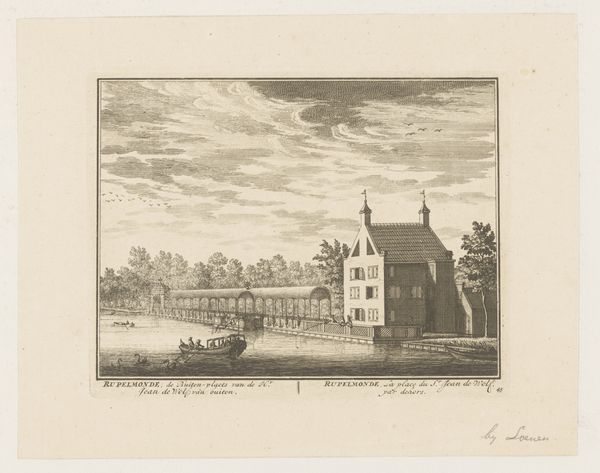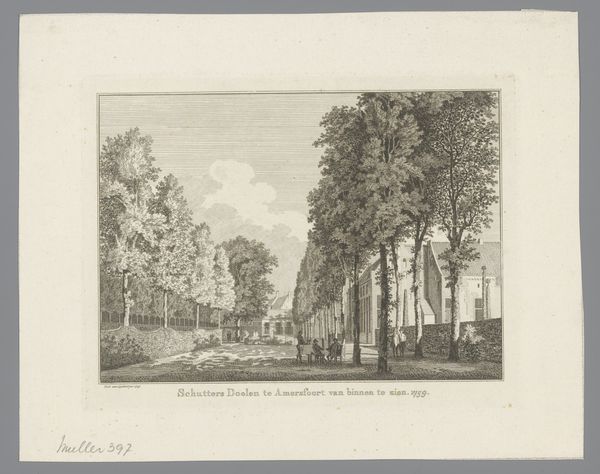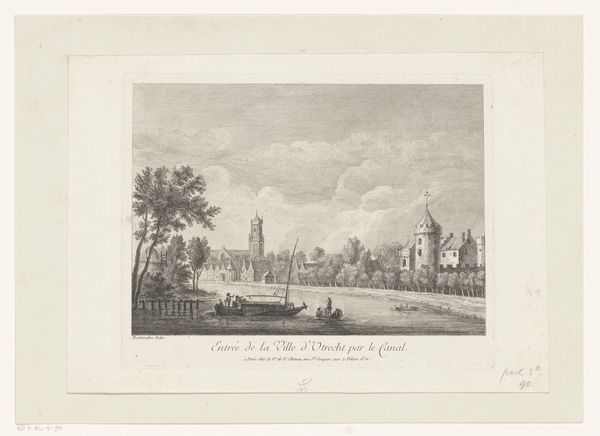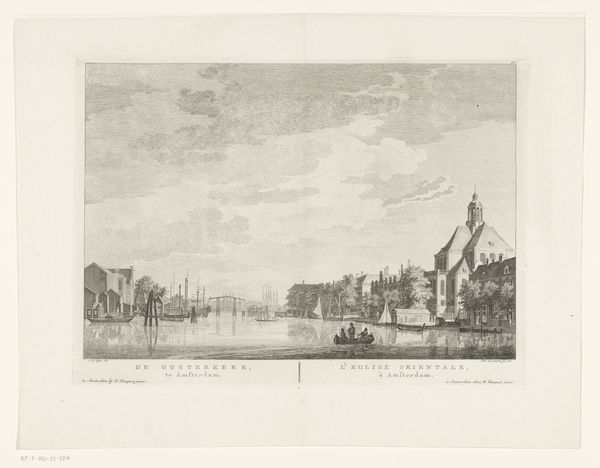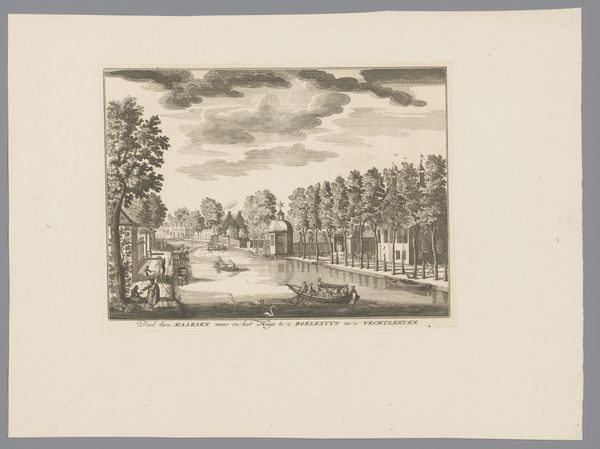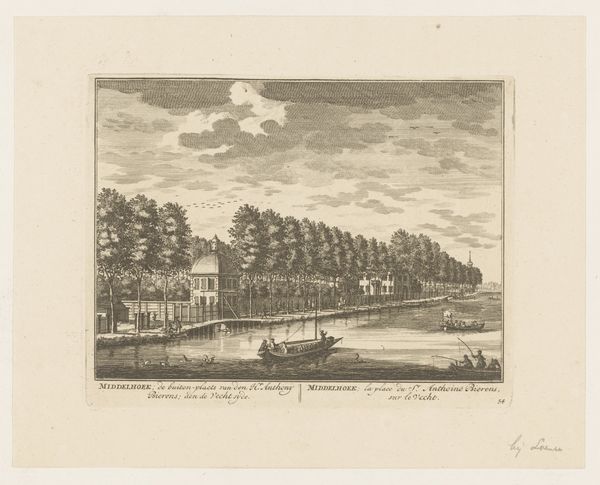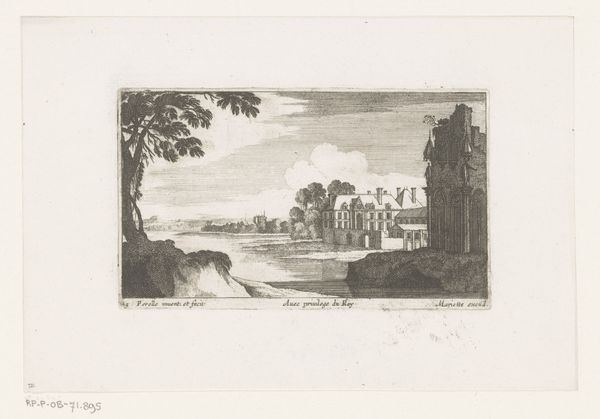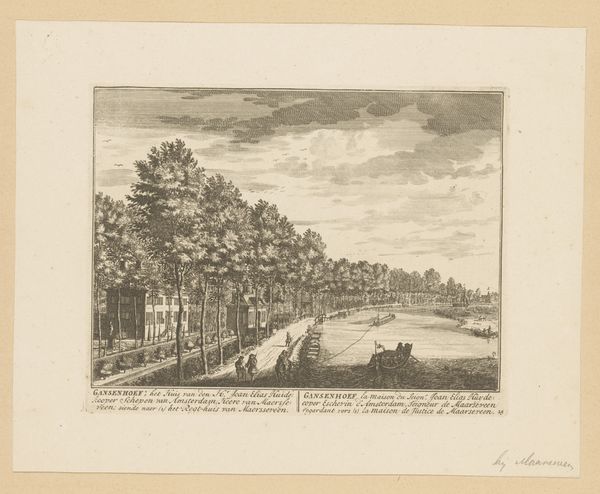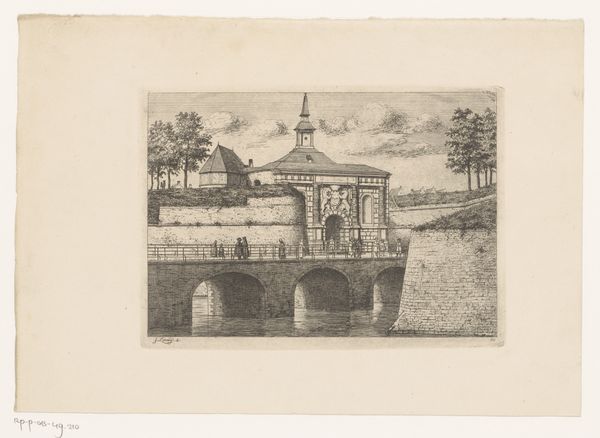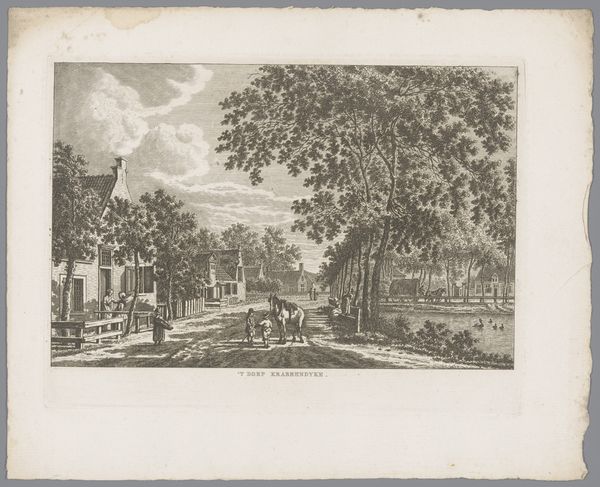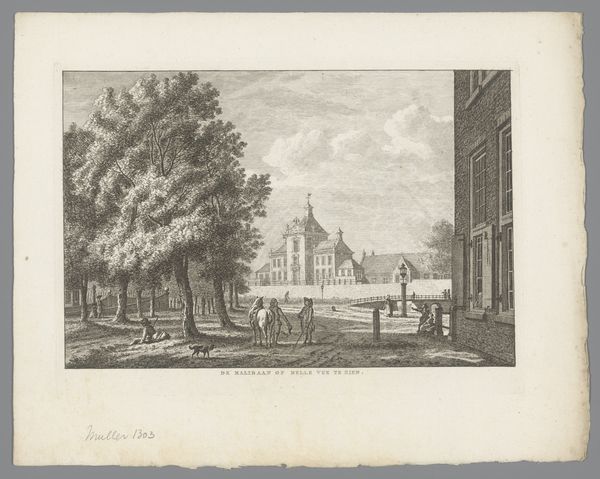
Dimensions: height 149 mm, width 212 mm
Copyright: Rijks Museum: Open Domain
Curator: We’re looking at "View of Merckenburg Castle," a print by Antoine Radigues, created sometime between 1731 and 1809. Editor: There’s a calmness to it, like stepping into a dream. The water is still, and the castle has this perfect fairytale quality, almost as if it's floating. Curator: Radigues captured the castle with precise lines, creating depth with a focus on perspective and light. The architecture becomes almost sculptural thanks to the use of the engraving medium. Can you tell me about your interpretation of how the material influences this representation? Editor: Well, consider the world Radigues operated in—a society increasingly fixated on images and representation. This wasn't just "art;" this was a commodity. Engravings democratized art. A printed image means repeatable and marketable art, impacting how people accessed landscapes, architecture, or their own constructed world. Curator: Absolutely. He turns architecture into something reproducible, less about the individual hand and more about industrial processes. This transforms the perception of not just art but architecture as a construction. Editor: You nailed it. But that delicate landscape scene almost masks that undercurrent of societal transformation that this printed work brings about. There’s an understated revolution here. The detail, the implied labor...each print would take considerable time to create and would require different tradesmen working in collaboration, bringing an industrial angle to art production Curator: Radigues’ choice of technique allowed a kind of atmospheric rendering that perhaps a quicker medium couldn't have achieved. Editor: And speaking of the “atmosphere” can’t escape this—everything about its method is bound to commerce and broader cultural narratives of consumption and access. That makes it much more interesting for me, and more telling of the time. Curator: Ultimately, viewing it prompts contemplation—a reflection on history. It reminds us that places, like memories, undergo constant reinterpretation. Editor: So here's to art that shows us the view while also telling the story of how that view came to be available for all to see.
Comments
No comments
Be the first to comment and join the conversation on the ultimate creative platform.
